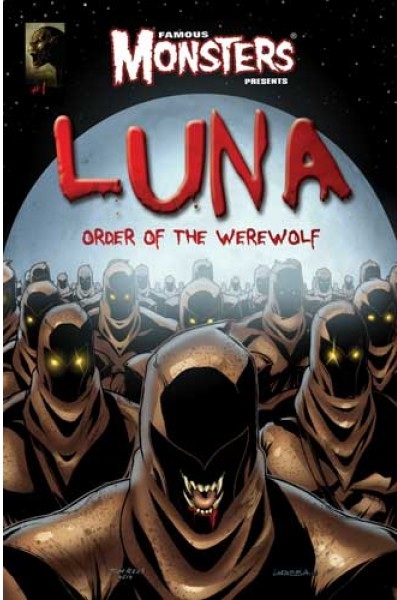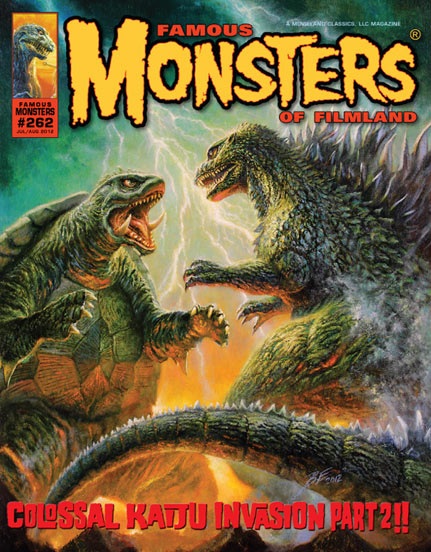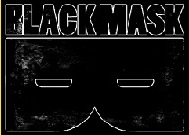
 Greetings, all. Ambush Bug here with another AICN HORROR: ZOMBIES & SHARKS column. This time around I have an interview I did at the New York Comic Con with director Barry Levinson where we focused on his new found footage film recently released in theaters, THE BAY. Here’s what Mr. Levinson had to say…
Greetings, all. Ambush Bug here with another AICN HORROR: ZOMBIES & SHARKS column. This time around I have an interview I did at the New York Comic Con with director Barry Levinson where we focused on his new found footage film recently released in theaters, THE BAY. Here’s what Mr. Levinson had to say…AMBUSH BUG (BUG): So I am here with Mr. Barry Levinson. This is a fantastic honor to meet you today. So, how is the Con treating you today here in New York?
BARRY LEVINSON (BL): Well, it’s just beginning, but it’s fascinating.
BUG: Yeah.
BL: I mean there’s so many people! I mean it’s amazing, so it’s interesting because it’s sort of like the, it’s new, you know it’s this transition, this kind of collision of all of this kind of, in many cases, digital things, internet, you know, film, comic books. All kind of, you know, colliding into this type of event.
BUG: Yeah, and you’re here to promote THE BAY, and this is a new found footage film. Do you mind it being called that or is found footage a negative term these days?
 BL: No, I mean it’s fine, if it defines it easier, it’s fine. I never thought of it as found footage because when we first started, I was thinking this was the first time in history that you can actually almost do like an archaeological dig and find the personal small moments of us because we text, you know? We use the cell phone, you know, we do all of these things with one another, and if you were to collect everything, you would find all of these small kinds of moments that never existed in the past. So, I thought of this sort of archaeological kind of dig with a wide scope to it; you’d really get a sense of what was happening in a town when this catastrophic event took place.
BL: No, I mean it’s fine, if it defines it easier, it’s fine. I never thought of it as found footage because when we first started, I was thinking this was the first time in history that you can actually almost do like an archaeological dig and find the personal small moments of us because we text, you know? We use the cell phone, you know, we do all of these things with one another, and if you were to collect everything, you would find all of these small kinds of moments that never existed in the past. So, I thought of this sort of archaeological kind of dig with a wide scope to it; you’d really get a sense of what was happening in a town when this catastrophic event took place. BUG: Yeah, kind of like a time capsule...
JL: Like a time capsule with intimacy to it. So, that’s the way I approached it. To call it found footage doesn’t matter because it simplifies it.
BUG: Yeah, and it does seem like this is a film that’s put together in a much broader scope than most found footage films where it’s just one person with a camera.
BL: Right.
BUG: Was that easier for you or harder for you to coordinate as far as just the technical aspects of it at all?
 BL: Well, it’s more complicated in this regard: everybody’s camera that’s being used is going to have a different texture to it, and so what we wanted to do was not start, let’s not start with our real high end camera. So, what we did was test all the consumer cameras. We would say, “so, what does a Google phone do? What does an iPhone do? What does a Sony underwater camera, what’s that going to look like?” So, we went through probably a hundred different of these consumer products, picked the ones that we thought would give us the visual palette for the thing, so we ended up with like twenty-one different digital platforms to work from. So, just on a technical level it was interesting to kind of pick and choose. And then, afterwards we still tweaked it in the DI Suites and Final Cut.
BL: Well, it’s more complicated in this regard: everybody’s camera that’s being used is going to have a different texture to it, and so what we wanted to do was not start, let’s not start with our real high end camera. So, what we did was test all the consumer cameras. We would say, “so, what does a Google phone do? What does an iPhone do? What does a Sony underwater camera, what’s that going to look like?” So, we went through probably a hundred different of these consumer products, picked the ones that we thought would give us the visual palette for the thing, so we ended up with like twenty-one different digital platforms to work from. So, just on a technical level it was interesting to kind of pick and choose. And then, afterwards we still tweaked it in the DI Suites and Final Cut. BUG: Why did you decide to use different security cameras and iPhones and all of these other modes of recording?
BL: Well, there is in a sense that you want some things to be degraded more than others, so it forces you to try to look a little bit more into certain scenes because it’s not quite good enough, you know? Some of it you want to have cooler tones, hotter tones, you know, all these little teeny things along the way that you just, you want to find something that you think is satisfying for an audience, not that they pay attention, but it gives you a credibility into it.
 At the end of the day, everybody knows it’s a movie, I mean, you know, we’re hip to this. It’s not like, “really? I didn-,” but within it, you say, look, if this is supposed to be collected from all these things, you want to give as much credibility as you possibly can, and that means in terms of shooting it, you’ve got to give it all the credibility you can, so you can’t cut from an over the shoulder to a two-shot. You don’t have that, so then how are you going to orchestrate and do a scene when you don’t have the traditional coverage?
At the end of the day, everybody knows it’s a movie, I mean, you know, we’re hip to this. It’s not like, “really? I didn-,” but within it, you say, look, if this is supposed to be collected from all these things, you want to give as much credibility as you possibly can, and that means in terms of shooting it, you’ve got to give it all the credibility you can, so you can’t cut from an over the shoulder to a two-shot. You don’t have that, so then how are you going to orchestrate and do a scene when you don’t have the traditional coverage? BUG: And so I see a whole bunch of films, and they range from decent to pretty bad. But this is really the first time that I remember that an established, award winning director who’s directed pretty much all the stars that everyone knows has tried to tackle this genre. Usually it’s a first time director doing this sort of thing. Why did you decide to do it in this way?
BL: Well, there’s two things to it. One, I never would have thought to do it. It’s only because someone asked me to do a documentary about the Chesapeake Bay because it’s 40% dead, and then I realized I didn’t know if the documentary was the best way to go about it. But the facts were so interesting and frightening that I began to think well, what happens when you put it in a storytelling form and you play it off that way, and if you want to pay attention to the facts, it doesn’t matter, but the facts actually create a certain drama to the piece and a certain subtle authenticity to it all. Right? And then you’d say, “hey!” You know? “Look!”
 That’s one of the things that sci fi, sci fi’s always kind of taken issues of the day and mixed it in there, you know? In the 50s in terms of radiation and nuclear, you know, proliferation, kind of wandered their way into that, the sci fi form. So, it made sense, and I’ve not, you know, it’s like the good and bad in terms of your career. I’ve never been that taken with “this is the kind of movies I’m supposed to make”, I’ve only been, you know, “well that’s interesting. I’d like to do that. Well, I’d like to do that,” so, I don’t, I’m not trying to get myself, “well, this is what I like.” I like to tell stories, so I don’t care if the movie costs, if I’m making an expensive movie or I’m making a very inexpensive movie. I’m just sort of propelled by that because it’s fun. I mean, all the aggravation in this business and whatever, at the end of the day you’re doing because it’s fun. You’re telling a story, you’ve got some actors, and you’re out there to have some fun.
That’s one of the things that sci fi, sci fi’s always kind of taken issues of the day and mixed it in there, you know? In the 50s in terms of radiation and nuclear, you know, proliferation, kind of wandered their way into that, the sci fi form. So, it made sense, and I’ve not, you know, it’s like the good and bad in terms of your career. I’ve never been that taken with “this is the kind of movies I’m supposed to make”, I’ve only been, you know, “well that’s interesting. I’d like to do that. Well, I’d like to do that,” so, I don’t, I’m not trying to get myself, “well, this is what I like.” I like to tell stories, so I don’t care if the movie costs, if I’m making an expensive movie or I’m making a very inexpensive movie. I’m just sort of propelled by that because it’s fun. I mean, all the aggravation in this business and whatever, at the end of the day you’re doing because it’s fun. You’re telling a story, you’ve got some actors, and you’re out there to have some fun. BUG: Well, that’s what really fascinated me about this project in particular is that it is based in fact and this creature, what is it called? Is it an...
BL: Isopod.
BUG: ...an isopod. It replaces the tongue of a regular fish and just basically eats off of whatever the fish eats.
BL: Becomes an eating machine.
 BUG: Yeah. So, how did you discover this sort of thing?
BUG: Yeah. So, how did you discover this sort of thing? BL: Well, we were going down the road, and then Mike, the screenwriter, we were talking, and he said, “you know about this isopod?” And we said, “what?” And then he mentioned this thing about the isopod, and we all thought, “oh, this is fabulous,” and that became one of the key things into it. That this, that we could have this kind of evolution in a way, because in other words, it did jump from the Pacific to the Atlantic, and it can, you know, can it adapt to brackish water? And, because of all the kind of toxic soup of the Chesapeake Bay, can it ultimately do that? And we all go, “oh, that’s fun! That’ll be good.”
BUG: Do you have a personal investment in the Chesapeake Bay? Do you live near there?
BL: I grew up near Baltimore, and you know, the Chesapeake is the largest estuary in the United States, and you’ve got all the blue crabs, and you’ve got all the fishing, and all the recreation, and you have all this stuff. So, I’ve been around this my whole life. And then, you say, “well, it’s 40% dead!” And you go, “well, anybody carrying on about it?” I mean, you’d assume there would be an outcry about it. No, there isn’t. You know, there are these various viruses in the water that exist, the vibrio virus, that if you have a cut, and you happen to get it right there you’re going to be dead in 24 hours. That’s for real! We’re not making that up.
 You know, all of these chemicals that we throw into the Chesapeake Bay that we mention in the movie, they’re all real, we’re not making that up. The fact that there’s chicken excrement dumped into the Bay that’s laced with antibiotics and steroids, that’s a fact; we’re not making it up. So, we’re saying this is what’s out there, folks! You know, under that pretty water, there’s a lot of trouble out there! Now, we are coexisting with it, but we are playing, you know, with a very dangerous, we’re playing dangerous game in a sense. Can we improve it? Yeah, we could. Why aren’t we? There’re a hundred reasons that we can say why. So, you say let’s tell, let’s take that, now let’s move that into the storytelling device, enjoy that, have fun, get scared, whatever it is that, you know, in terms of that time frame, and afterwards you can talk about some stuff because it’s there. It’s part of the genre allows for that.
You know, all of these chemicals that we throw into the Chesapeake Bay that we mention in the movie, they’re all real, we’re not making that up. The fact that there’s chicken excrement dumped into the Bay that’s laced with antibiotics and steroids, that’s a fact; we’re not making it up. So, we’re saying this is what’s out there, folks! You know, under that pretty water, there’s a lot of trouble out there! Now, we are coexisting with it, but we are playing, you know, with a very dangerous, we’re playing dangerous game in a sense. Can we improve it? Yeah, we could. Why aren’t we? There’re a hundred reasons that we can say why. So, you say let’s tell, let’s take that, now let’s move that into the storytelling device, enjoy that, have fun, get scared, whatever it is that, you know, in terms of that time frame, and afterwards you can talk about some stuff because it’s there. It’s part of the genre allows for that. BUG: And, going the found footage genre, there are a lot of rules of why are people still filming all of this and why is the camera still rolling, and why is this going on and that going on? How did you tackle those types of obstacles for this movie in particular?
 BL: One, we actually, I think we’ve tried to deal with that. So, for instance, Donna, who was the newsperson, decided to stop filming because she was too scared to go on. You know what I mean? The young couple filmed up until he had his camera, and up until coming into the antique shop when he put it down on the table, the surveillance camera filmed the rest, and his camera was filming until that. So, we don’t actu-, and young couple whatever that goes on, all those things you do see a beginning, a middle, and end. So, we tried to lay it out that we’d say “why would there be a camera here?” and if there isn’t then how would we possibly deal with it? That’s why when, for instance, in one of the bigger sequences in the movie, when the squad car pulls up to the house, and they go in to see what’s happening in the house, the whole scene plays out with the surveillance camera just looking at a house and not seeing what’s inside because we couldn’t go inside. It would break the rule, so we’d play a scene with screaming and everything else, and we’d have to imagine what’s going on in that house because we cannot go in or we break the rules.
BL: One, we actually, I think we’ve tried to deal with that. So, for instance, Donna, who was the newsperson, decided to stop filming because she was too scared to go on. You know what I mean? The young couple filmed up until he had his camera, and up until coming into the antique shop when he put it down on the table, the surveillance camera filmed the rest, and his camera was filming until that. So, we don’t actu-, and young couple whatever that goes on, all those things you do see a beginning, a middle, and end. So, we tried to lay it out that we’d say “why would there be a camera here?” and if there isn’t then how would we possibly deal with it? That’s why when, for instance, in one of the bigger sequences in the movie, when the squad car pulls up to the house, and they go in to see what’s happening in the house, the whole scene plays out with the surveillance camera just looking at a house and not seeing what’s inside because we couldn’t go inside. It would break the rule, so we’d play a scene with screaming and everything else, and we’d have to imagine what’s going on in that house because we cannot go in or we break the rules. BUG: One last thing I was just wondering: with this found footage trend, what do you think that says about us? About us as a society, our move towards all of this stuff that has to be experienced in the first person point of view? Were those reflections on society coming up in the film for you while you were making it?
 BL: Well, you know, it shows the progression of us, if you ever look at footage where someone is talking to a camera like in some old newsreel or something, and they’re asking somebody a question, and they’re all like, petrified because there’s a camera. They’re stuttering like, “yes, I was...uh...there...and the...the accident ha-,” whatever it is, right?
BL: Well, you know, it shows the progression of us, if you ever look at footage where someone is talking to a camera like in some old newsreel or something, and they’re asking somebody a question, and they’re all like, petrified because there’s a camera. They’re stuttering like, “yes, I was...uh...there...and the...the accident ha-,” whatever it is, right? BUG: Yeah.
BL: And now, you put a camera, anybody’s talking to a camera and prepared.
BUG: We’re ready to perform.
BL: We’re so comfortable in front of the camera. There is no nervousness to it. And so, it’s just inherent in it. It’s inherent, it is part of us now, and that’s what we do all the time, and that’s why with all this fascinating to-, if we use the found footage things, look how extensive it can be if it tells you a picture of what we’re about as opposed to one person with a camera. It’s everywhere! It’s in all of these things, and it was interesting to tell a story in that way.
BUG: Well, thanks again. I wish you so much luck with the film, and it really seems like it’s going to be a cool movie. I can’t wait to check it out, so it’s going to be a lot fun, so I can’t wait.
BL: Great! Thanks.
BUG: THE BAY is in limited release in theaters now and will soon be available on VOD! I’ll keep you posted when it is released if it’s not at a theater near you.
See ya on Friday with our regular AICN HORROR column, folks!

 Ambush Bug is Mark L. Miller, original @$$Hole/wordslinger/reviewer/co-editor of AICN Comics for over ten years. He has written comics such as MUSCLES & FIGHTS, MUSCLES & FRIGHTS, VINCENT PRICE PRESENTS TINGLERS & WITCHFINDER GENERAL, THE DEATHSPORT GAMES, WONDERLAND ANNUAL 2010 & NANNY & HANK (soon to be made into a feature film from Uptown 6 Films). He is also a regular writer for FAMOUS MONSTERS OF FILMLAND & has co-written their first ever comic book LUNA: ORDER OF THE WEREWOLF (to be released in late 2012 as an 100-pg original graphic novel). Mark has just announced his new comic book miniseries GRIMM FAIRY TALES PRESENTS THE JUNGLE BOOK from Zenescope Entertainment to be released March-August 2012. Also look for Mark's exciting arc on GRIMM FAIRY TALES #76-80 which begins in August 2012.
Ambush Bug is Mark L. Miller, original @$$Hole/wordslinger/reviewer/co-editor of AICN Comics for over ten years. He has written comics such as MUSCLES & FIGHTS, MUSCLES & FRIGHTS, VINCENT PRICE PRESENTS TINGLERS & WITCHFINDER GENERAL, THE DEATHSPORT GAMES, WONDERLAND ANNUAL 2010 & NANNY & HANK (soon to be made into a feature film from Uptown 6 Films). He is also a regular writer for FAMOUS MONSTERS OF FILMLAND & has co-written their first ever comic book LUNA: ORDER OF THE WEREWOLF (to be released in late 2012 as an 100-pg original graphic novel). Mark has just announced his new comic book miniseries GRIMM FAIRY TALES PRESENTS THE JUNGLE BOOK from Zenescope Entertainment to be released March-August 2012. Also look for Mark's exciting arc on GRIMM FAIRY TALES #76-80 which begins in August 2012.

Interested in illustrated films, fringe cinema, and other oddities?
Check out Halo-8 and challenge everything!

Find more AICN HORROR including an archive of previous columns
on AICN HORROR’s Facebook page!
